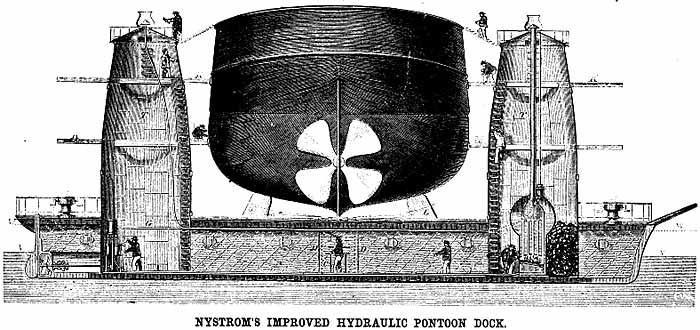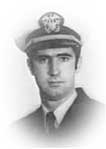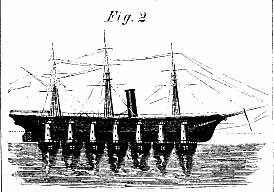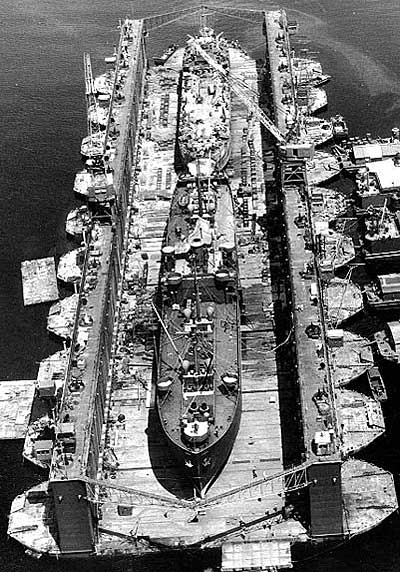|
|
|
The Principal of Unintended ConsequencesThis wasn’t supposed to be a big project. Just pick an engraved illustration, clean it up in Photoshop and be ready for class. Since I already had Photoshop I went directly to Step 2: getting an engraving. For this I went to American Memory site at the Library of Congress. So many choices, so little time. Ok, I’ll try Scientific American; they have lots of interesting engravings about cutting edge Victorian Era technology. As everyone in the class is now aware I’m sort of drawn toward Oregon in the topics I chose so I pick the 1859 issue of Scientific American, the year Oregon was admitted to the Union. And there it was on the first page of the first issue of that year technology so cutting edge that 85 years later it would be classified top secret and which also seems to fit into the unofficial theme of this site. |
 |
|
In the illustration above I give you “Nystrom’s Hydraulic Pontoon Dock” as it appeared on page 1 of Scientific American, vol. 1, num. 1, of July 2, 1859. Mr. J. W. Nystrom’s concept was to place several barges each equipped with ballast tanks and side towers side-by-side to form a dry-dock structure. In a second figure on the same page (shown below to the left) a side on view of several barges lifting a ship is shown. It was a unique and clever idea but no one seemed interested. The usual way to build a floating dry-dock is as a single structure not one of multiple barges arranged side-by-side. Below on the right is a photograph of the U.S. Navy floating dry-dock AFDM-6 (with an unidentified attack submarine inside) that show the normal construction of such structures. This dock was built in 1943 and is of the largest currently in use. It can lift a vessel of 8,000 tons displacement. |
|
|
|
However, in 1943 the U.S. Navy needed to build a floating dry-dock large enough for battleships and aircraft carriers, displacing 60,000 and 48,000 tons respectively. Using Mr. Nystrom’s multiple pontoon configuration the AFDB-1 was constructed. This dock, shown at the right, had 10 pontoon sections. Using all 10 sections it could lift 90,000 tons. One curious fact about AFDB-1 is that during the war with Japan its existence was classified as top secret. This put it on a par with the atomic bomb as one of the most vital pieces of information to be kept from the enemy. Mundane as it may seem the ability to dry-dock capital ships near the front was a key component to the mobile basing concept needed to project power across the vast distances of the Pacific Ocean. But what does any of this have to do with the content of Clio Wired? Just this, Nystrom's dock, like Da Vinci's helicopter, was concieved many years before the technology was available to realize it. In the this course we have read speculations on what form new media might give history in the future. Some in the class dismissed these speculations on the grounds that the technology isn't available now to realize them and most likely won't be available in the near future. So what. At some point in time the technology will be there and historians and others whose task it will be to apply the new technology will at least have sketch of what it is they're supposed to do. |
|
HOME | HIST 696 | LINKS |





